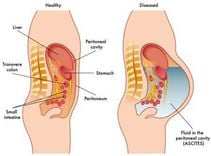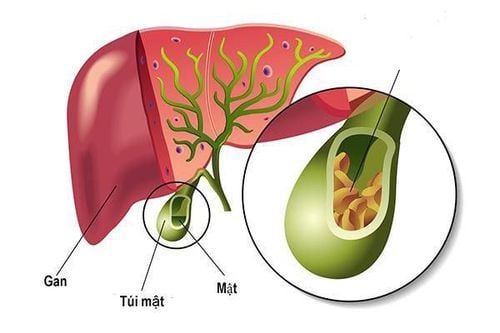This is an automatically translated article.
Gallbladder polyps are papilloma or pseudotumor lesions on the mucosal surface of the gallbladder. This is a benign lesion that can occur at any age. So when to use medicine to treat gallbladder polyps?
1. What is gallbladder polyp?
The gallbladder is a part of the biliary system, shaped like a bag 80-100mm long, 30-40mm wide, located close to the right lower lobe of the liver. The gallbladder is responsible for storing and storing bile, which is secreted by the liver, and aids in the digestion of food.
Gallbladder polyps are lesions arising from the lining of the gallbladder wall and growing into the gallbladder lumen to form a tumor or pseudotumor. Gallbladder polyps can occur at any age, women are more susceptible than men, and are most common between the ages of 30 and 50.
Gallbladder polyps are diverse in number and size, usually less than 10mm in diameter, some are 20-40mm in diameter, can have both gallbladder polyps and gallstones. Most gallbladder polyps are benign, but a small percentage can become malignant.
Some symptoms of gallbladder polyps
Clinical symptoms are often vague, less aggressive. When there are disorders of bile secretion, it can cause bile secretion in the gallbladder lumen, gallstones, cholecystitis. Mild pain in the right lower quadrant, epigastric pain, bloating, dyspepsia, nausea, vomiting. Abdominal ultrasound: for hyperechoic images, without contrast; determine the location, size, and shape of the polyp (stemmed or stemless). Contrast cholangiography: indicated when the polyps are in difficult to see positions, failed to do ultrasound. In case of large polyps and risk of malignancy, computed tomography (CT-Scanner), magnetic resonance imaging (MRI) with or without contrast may be indicated.
2. Causes of Gallbladder Polyps
Some causes of gallbladder polyps:
Cholesterol polyps: account for 60% of acquired gallbladder polyps. It is usually caused by a defect in cholesterol metabolism that causes an excess of cholesterol to form papillae. Cholesterol polyps are often associated with dyscholesterolemia. Adrenal polyps: account for 25% of acquired gallbladder polyps. It is usually caused by an overgrowth of the lining of the gallbladder. Polyps that appear alone at the base of the gallbladder are at risk of malignancy, seen in elderly patients. Inflammatory polyps: account for 10% of gallbladder polyps. The cause is often due to chronic inflammation in the gallbladder, forming scar tissue, forming polyps. Some risk factors increase the likelihood of gallbladder polyps:
Patients over 60 years old who have or have a history of liver diseases (fatty liver, viral hepatitis,...). Patients with overweight, obesity, high blood fat levels, high blood glucose. Unbalanced eating habits, a diet high in sweet fats, lack of fiber and vitamins. The patient had a history of primary cholangitis, gallstones.
3. Gallbladder polyp treatment
Most gallbladder polyps are benign and do not require any treatment. When there are symptoms on the body, it is necessary to intervene treatment. Measures to treat gallbladder polyps include
If gallbladder polyps are detected through laboratory tests, but the patient has no symptoms of pain, fever, etc., it is recommended to check every 6 months until there are no pictures of polyps. to screen for malignancies. Medical treatment is only used to support pain relief, indigestion, nausea,... Treatment of causes such as cholesterol disorders; inflammation treatment. For polyps larger than 1cm in size, fast growing, spreading legs, irregular shape, patients with symptoms of pain, fatigue,... polyps suspected of malignant progression will have indication for cholecystectomy. Care and nutrition regimen in gallbladder polyp patients
Abstain from foods containing a lot of saturated fat, greasy food, fast food, starch, sugar; limit cholesterol-rich foods such as egg yolks, animal organs, cheeses, etc. Should be added to the diet with vitamin-rich fruits, fiber-rich foods, vegetable fats To aid digestion, limit bloating, indigestion. Periodically check for benign polyps that do not cause discomfort until there are no more polyps on ultrasound. Monitor the symptoms of pain and discomfort on the digestive system, perform diagnostic tests, screen when detecting any suspicious symptoms. In summary, gallbladder polyp is a benign pathology, with few clinical manifestations, sometimes only incidentally discovered during physical examination. There is no specific treatment, but only symptomatic treatment when there are clinical manifestations.
Please dial HOTLINE for more information or register for an appointment HERE. Download MyVinmec app to make appointments faster and to manage your bookings easily.













